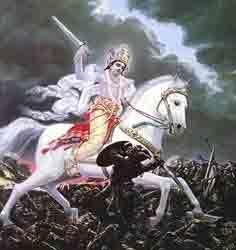Black Hole Incident of Calcutta
The ‘Black Hole’ was a tragic incident that happened in the run-up to the Battle of Plassey that took place in 1757. The incident served as casus belli for the invasion by the British on Murshidabad. Siraj ud Daulah, the then Nawab of Bengal, resented to the interference by the East India Company in his province. He was also livid with the company’s abuse of the commercial privileges which was granted by the Mughal emperor Farrukhsiyar under the firman of 1717. Though inexperienced and devoid of taking decisions, Siraj ud Daula set out to begin a military campaign against the English. During his military campaigns he captured Calcutta on 20 th June, 1756. Consequently, John Zephaniah Holwell, a narrator of the ‘Black Hole’ tragedy and a number of Europeans were taken prisoners who were confined in a chamber 18 feet by 14 inches, with only on window, throughout the hot and humid night of June in Calcutta. According to Holwell, they numbered about 165 or 170, and the nex




